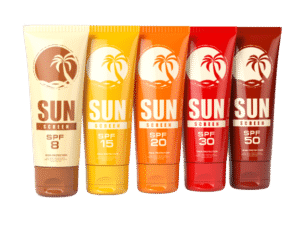Home » Direct Thermal vs Thermal Transfer Printing: What is the Difference?
Direct Thermal vs Thermal Transfer Printing: What is the Difference?

Direct Thermal Printing
Direct thermal printing uses heat-sensitive media that darkens as it passes under a printhead. Because it does not require ink, toner, or ribbons, the process is both simple and low-maintenance.
Advantages:
Produces sharp, scannable barcodes and text.
Easy to operate with no consumables.
Offers sustainable options and low upkeep.
In addition, it requires no setup time.
Disadvantages:
However, labels are sensitive to light, abrasion, and heat.
They are not ideal for long-term use, often fading in 6–12 months.
As a result, protective coatings are sometimes needed.
Applications:
Direct thermal is best for short- to medium-term labels. For example, it is often used for shipping labels, visitor passes, meat carton tags, and receipts. On the other hand, it is not recommended for product barcodes that must endure a complex supply chain.

Direct Thermal Mobile Printer
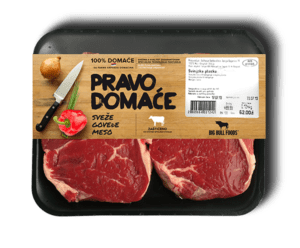
Direct Thermal Printed Label
Thermal Transfer Printing
Thermal transfer printing uses a ribbon heated by the printhead, transferring ink directly into the label substrate. This process delivers long-lasting and durable labels that resist environmental stress.
Advantages:
Crisp, high-definition prints, long shelf life, supports 1D/2D barcodes, withstands moisture, UV, chemicals, and sterilization.
Disadvantages:
Higher cost, requires ribbons and setup, less sustainable, potential ribbon wrinkles.
Applications:
Product identification, inventory management, certification labels, circuit boards, laboratory specimens, cold storage, outdoor labeling, and industrial hazard identification.
Thermal transfer is ideal for long-term or critical labeling, where durability and resistance are essential.
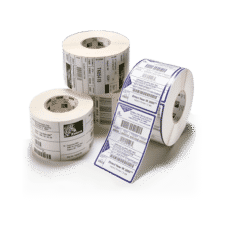
Thermal Transfer Labels
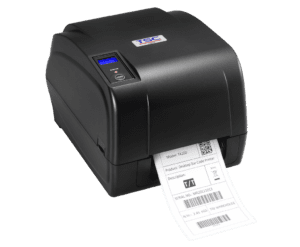
Thermal Transfer Label Printer
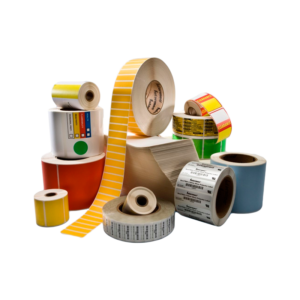
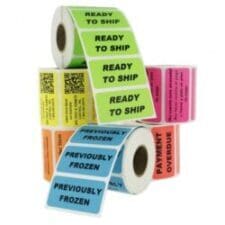
Choosing the Right Labeling Method
Use direct thermal for simplicity, cost efficiency, and short-life labels.
Use thermal transfer for durability, compliance, and high-performance labeling in demanding environments.
Label Solutions with Brown Packaging
From direct thermal shipping labels to long-lasting thermal transfer identification, Brown Packaging provides tailored labeling solutions for industrial, retail, and ecommerce operations. Contact us to find the right label system for your supply chain.
References
Soroka, W. (2009). Fundamentals of Packaging Technology (4th ed.). Institute of Packaging Professionals.
GS1. (2023). Barcode Standards and Printing Guidelines. Retrieved from https://www.gs1.org
FSC. (2023). Responsible Labeling in Packaging. Forest Stewardship Council.
Meta description:
Point-of-purchase (POP) displays do more than attract shoppers—they must also survive the complexities of modern supply chains. From manufacturing and warehousing to transportation and in-store
Holiday returns cost retailers billions each year, with packaging failures being a major driver. Damaged goods, oversized boxes, and poor protection lead to dissatisfied customers
Unboxing has become a core part of the e-commerce experience, especially during the holidays. Seasonal packaging creates anticipation, reinforces branding, and turns customer deliveries into
Club stores such as Costco, Sam’s Club, and BJ’s Wholesale represent unique opportunities for brands. These high-traffic environments demand large-format point-of-purchase (POP) displays that deliver
Point-of-purchase (POP) displays play a dual role in retail environments: they must capture attention with graphics while supporting products with reliable structure. If one side
Point-of-purchase (POP) displays must catch a shopper’s eye while also moving efficiently through the supply chain. Striking the right balance between visual impact and logistics
Home » Direct Thermal vs Thermal Transfer Printing: What is the Difference?

Custom packaging stands as a pivotal element for brands looking to differentiate their products in a crowded market. It is tailored specifically to meet the

Baby boomers, born between 1946 and 1964, are a significant demographic with substantial purchasing power. Often characterized by traditional values, brand loyalty, and a focus

In the competitive business landscape of today, custom packaging has emerged as a powerful tool to not only protect products but also make a lasting


